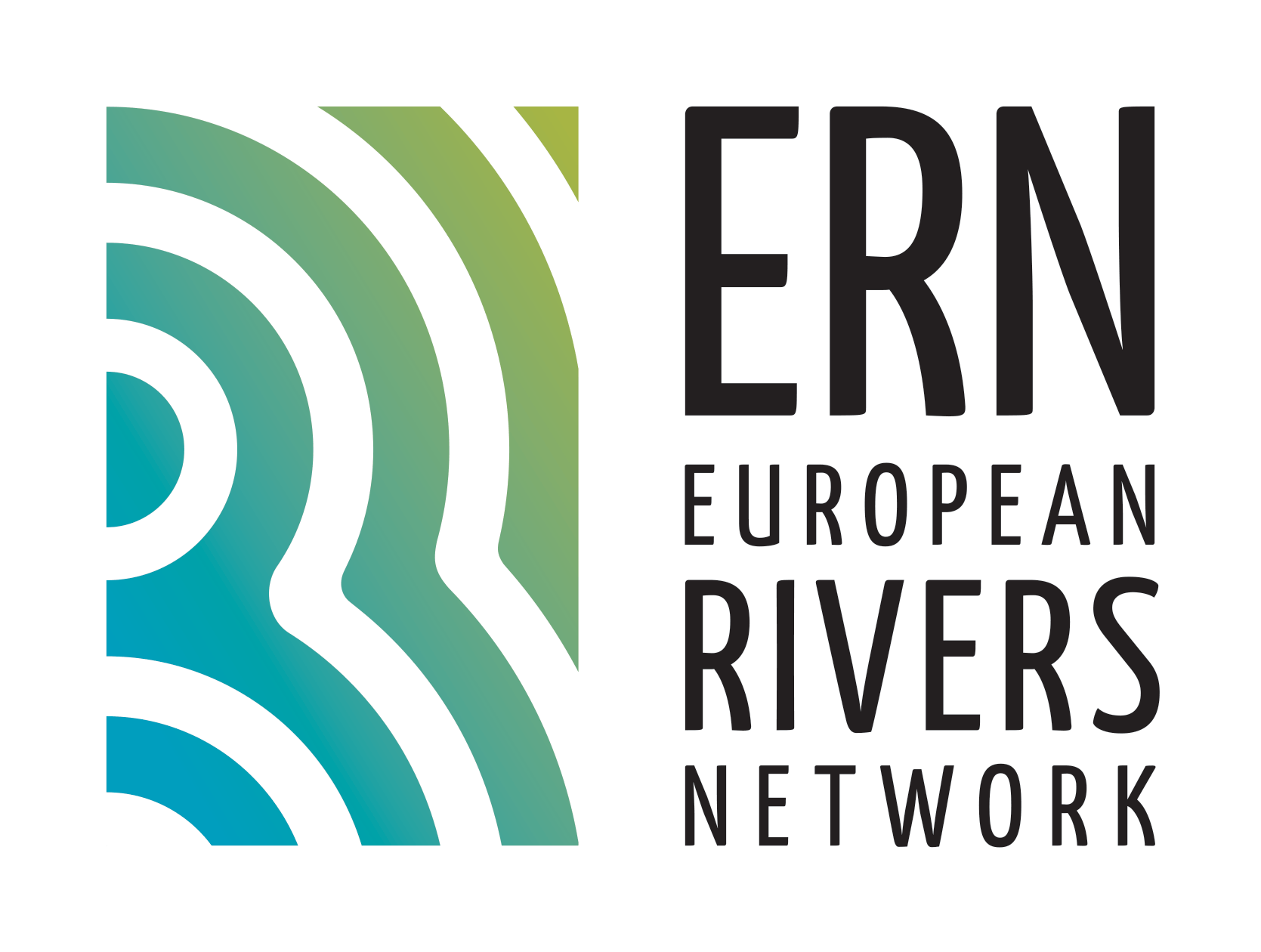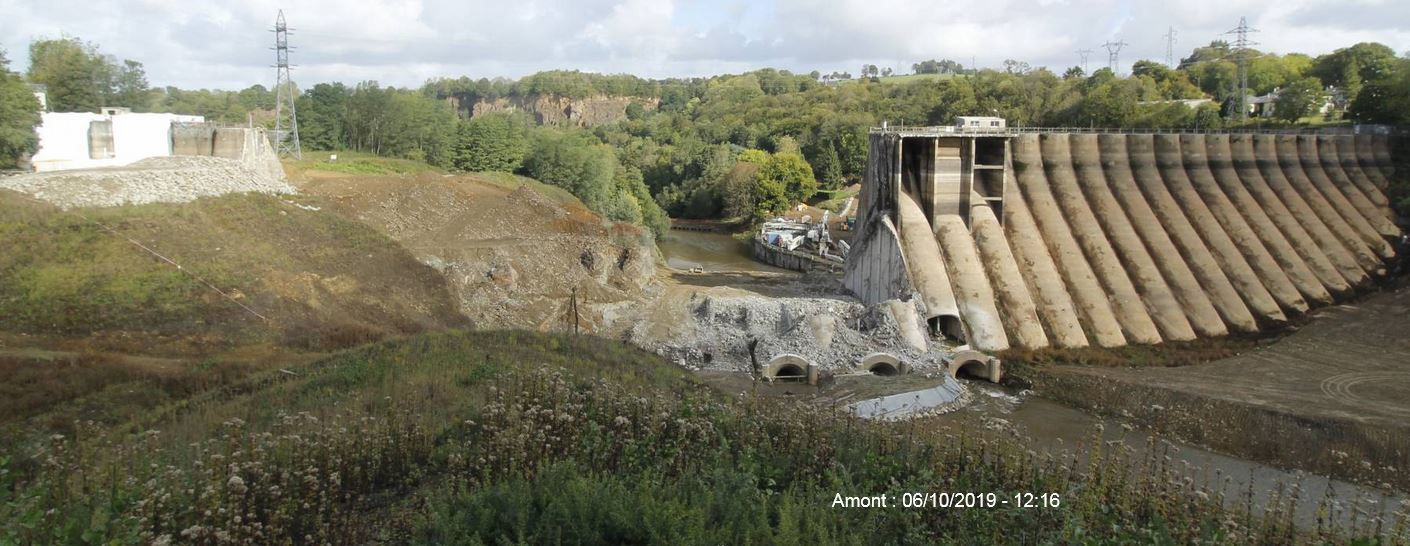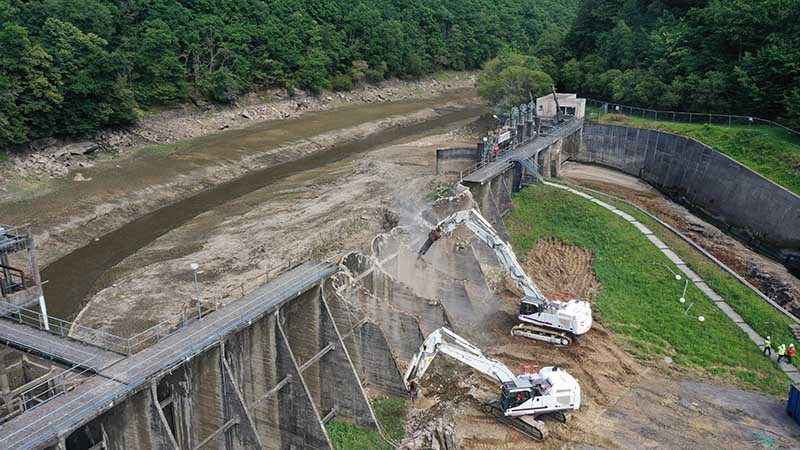The mains steps towards a living Sélune river !
The reopening of the Sélune Valley, a prelude to its re-naturalization, is a long-standing project punctuated by strong legislative, regulatory and judicial decisions.
1924
Classification by order of the Sélune under the free movement of migratory fish. This classification required the establishment of devices on the two dams to ensure the free movement of migratory fish. Studies conducted by EDF and the State services concluded that it was technically impossible to implement such a system.
1986
Clarification by ministerial order of species for which the previous ranking was deemed effective (Atlantic salmon, sea trout, brown trout, European eel, pike, sea lamprey, river lamprey). EDF then had a period of 5 years to comply with its obligations and to meet the standards, without compensation or the possibility of derogation.
1996
Approval of the master plan of development and water management (SDAGE) of the Seine-Normandy basin. This master plan stated, among other things, that the non-renewal of concessions and the removal of the Sélune dams were a condition if free movement of fish cannot be respected.
2000
The European Water Framework Directive (WFD) to preserve and restore aquatic waterbodies and to achieve good status of freshwater by 2027 at the latest. This directive also calls to respect the commitments made in the application of the pre-existing directives, in particular the protection of waterways habitats and aquatic species in the Natura 2000 Framework. In this respect, it is observed that the Mont Saint Michel Bay, whose ecological functionality is highly dependent on the basins that flow into it, is in a special conservation zone.
2004
EDF filed a concession renewal application on December the 17th, 2004 for a period of 40 years. The consultations that followed this request (consultations of services and communities, public inquiry) made it possible to raise the various issues of Sélune and these two dams.
2005 : A clear positioning of the CLE of the SAGE Sélune
The SAGE, pronounced for the removal of the dams in 2013, during the next evacuation.
In fact, very quickly, the SAGE Sélune took a position on the fate of the dams by examining the impact on water and aquatic environments. The three central objectives of the SAGE in order to attain a positive status of the water bodies being; the reduction of polluting flows from agriculture, the development of the territory and the preservation of the fauna and the flora of aquatic environments. As such, the SAGE has advocated:
– Establishment of multi-year river restoration and maintenance programs
– The clearing of watercourses
– The restoration of the Sélune migratory axis at the end of the concession of the hydroelectric dams of Vezins and Roche-Qui-Boit (2013).
Among the 4 other objectives enacted to reconcile human activities, the SAGE has also included a specific objective on the fate of the dams, as defined in the following recommendations:
– management of the dams during the concession phase so that dam operations takes into account other users, in particular with regard to water quality, the downstream flow, tides and the provision of a reserve for drinking water, compensating for the evaporation of reservoirs,
– removal of the dams after the concession, by defining and implementing precautionary measures for the emptying and dismantling of the dams and by providing for corrective measures during emptying and de-construction operations.
2006
– Law on water and aquatic environments (Article L 214-17 of the Environment Code) providing the legal framework for the reopening of the valley. A project considered all the more relevant as the degradation of water (eutrophication storage of hazardous substances) has been amplified by the dams.
– On July the 26th, 2006, the prefect of La Manche issued a decree ordering EDF to equip its dams for the movement of migratory fish, requiring it within 6 months to provide a technical report specifying the nature and modalities of the works to be installed or, failing that, any technical justification on the impossibility of carrying them out.
2007
– January the 25th, 2007: EDF provides a report that concludes, as in previous studies, the impossibility of assuring the practicability of running the dam franchises. The reasons for this impossibility lie in the height of the Vézins dam (36m), the extent of its reservoir, which generates delays and prohibitive predation losses during upstream and downstream migration, the technical impossibility of equipping the dams for the downstream migration, whose type of turbines is responsible for 46 to 57% cumulative smolt mortality on both structures.
– End of concession of the dams: approval of the SAGE Sélune by the State and so dam removal.
2009 : The ministerial decision
Given this opinion, the issue of migratory fish on the Sélune (river classified under Article L.432-6 of the Environment Code, particularly for Atlantic Salmon and European eel) and the lack of technical possibilities for the rearrangement of the dams, and in the light of the conclusions of a working group led by the Prefect, the State decides, in accordance with the commitment made in the framework of the Grenelle of the environment, do not renew the administrative titles of the dams of Vezins and Roche-Qui-Boit.
This decision was announced on November the 13th, 2009 in Lisieux by Mrs. Chantal JOUANNO, Secretary of State for Ecology, during the launch for the national action plan for ecological river continuity restoration.
The operation to remove dams and re-naturalize the Sélune was then included in the “commitment agreement for sustainable hydropower and consistent with the restoration of aquatic environments following the Grenelle de l’Environnement”, signed on June 23 2010 between the State and 17 partners (including associations of elected representatives, representative associations of hydropower, major hydroelectric producers and environmental protection associations).
2010
– Inscription of the Sélune in the Priority Action Zone for the restoration of migratory transparency in the French Eel Management Plan adopted by the European Commission in Brussels in application of the European Regulation on Eel n ° 1100/2007.
– The Administrative Appeal Court of Nantes, in a judgment dated October the 19th, 2010, put the operator on notice (the State now for Vezins) to restore the free movement of migratory fish by the end of 2013 following the litigation initiated following the decree of formal notice to EDF to equip its works for the circulation of the migrating fish taken on July the 26th, 2006 by the prefect of Manche.
2012 : The ministerial decision concretized by two Orders of the Manche Prefect on July 3, 2012
– Order decreeing the cessation of the operation of the concession and authorized of Vezins and Roche-Boit on the Sélune dams,
– Order concerning the public safety management of the Vezins dams on the Sélune by EDF SA until the free flow of the Sélune waters is restored.
2014 : Public inquiry in favor but retreat of Ségolène Royal Ecological Ministry
– November 2014: The commission of inquiry gave a favorable opinion on the dismantling of the dams. The participation was strong: 882 letters received, 2,826 mails, 857 entries in the city halls registers, a total of 4,565 notices filed.
– December the 4th, 2014 Mrs. Ségolène Royal, then Minister of Ecology, visiting the department and following the meeting with local actors in at la Mazure announces against all odds the stop of the process of removing the dams and asks for new expertise.
2017 : The Sélune soon free again !
– March 2017: Drainage and sediment management work are conducted on the reservoir of Vezins to allow the safety review of the structure.
– The Minister of the Transition Ecological and Solidarity, Nicolas Hulot, announced on November the 14th, 2017 his decision to relaunch the process of removed the dams of Vezins and La-Roche-qui-Boit.
2019 : Start of works
– April 2019: The final emptying of the Vezins reservoir start of the dismantling of the powerplant house.
– 12th of June 2019 : In a historic moment for Europe’s rivers, the first, irreparable breach was made today in the 36 metre high Vezins Dam – kick-starting the biggest dam removal in Europe so far.
– 24-26 September 2019 : European Rivers Network, the French Agency for Biodiversity, the National Federation for Fishing in France and Dam Removal Europe, and the National Institute of Agronomic Research (INRA), the Water Agency Seine-Normandie and the NGO Aliance “Friends of the Sélune” organise in Rennes and Avranches an international conference on dam removal and the restoration of the Selune valley. page du colloque
– November 2019 : 60 % of the 36 m high dam Vezins removed.
2020 : End of work on Vezins and start of work on La Roche qui Boit
Since March, and in view of the health crisis linked to Covid 19, the Vezins works carried out by the DDTM 50 has been at a standstill. 90% of the dam has been removed, only the central pier and the foundations remain. With some delay, the works will resume until September so that finally the Sélune river can find its bed again.
– In June 2020, the project manager, EDF, launched the sediment management works at the Roche qui Boit dam. The extraction of sediments has two objectives: to reprofile the bed of the Sélune valley and to avoid their transfer downstream from the dam, which could impact the Mont Saint Michel bay. A total of 200,000m3 of sediment will be extracted.
2021 : La Roche Qui Boit : Postponement of deletion works to 2022
Sediment extraction at the Roche qui Boit dam will continue until autumn 2021. The sediments are pumped, transported nearly 4 km and then stored in biodegradable geotubes. These allow the sediment to be drained and the water to be returned to the Sélune. The sediments are then used to reprofile the valley.
The demolition work was due to start in winter 2021 but has finally been postponed to spring 2022 following recommendations from the OFB to preserve the watercourse downstream.
2022 : Removal of the La Roche-qui-boit dam
– May 2022: emptying of the La Roche-qui-Boit reservoir
– 20 June 2022: start of work to deconstruct the dam
– July 2022: Salmon monitoring upstream of the old dams
– Autumn 2022: The sub-prefect chairs a monitoring committee attended by various associations and partners, in particular to work on the valley renaturation project and launch of a “renaturation diagnosis” study.
2023: Removal of the river and encouraging initial results
– The Mont-Saint-Michel-Normandie conurbation community is organising conferences on the Sélune dam (historical overview and archaeological digs).
– Removal of the Roche-qui-boit dam to be completed in April 2023
– Summer 2023: The Prefecture opens the first educational trail in the Sélune valley (Manche), providing an insight into the history of the river.
– October 2023: INRAE delivers the first results and announces the return of migratory fish to the Sélune: salmon, eels and lampreys (see press kit, french), a reduction in water temperature downstream and an improvement in the river’s ecological status.
Vezins dam under deconstruction / CR : DDTM50
La-Roche-qui-Boit dam under deconstruction / CR: ERN, 2022
Protection and classification measures of Sélune
Watercourses classified in list 1 and 2 under Article L. 214-17 of the Environment Code
– list 1: The Sélune from the confluence with the Airon (in Saint Hilaire du Harcouet) to the sea (estuary included)
– list 1: The Sélune of the confluence with the Moulin Richard (in Barenton) at the confluence with the Airon (in Saint Hilaire du Harcouet
– list 2: The Selune, from the point defined by the coordinates L. 93: X: 408392, Y: 6840449 at the downstream limit of the mass of water: [FRHR. 351] the Selune from the foot of the La Roche Qui Boit dam to the mouth.
Watercourses classified under Article L. 432-6 of the Environment Code
– Sélune, downstream from its confluence with La Gueuche (communes of Lapenty and Milly) for Atlantic salmon, sea trout, brown trout, European eel, pike, sea lamprey, river lamprey. It imposes in fact a compliance of existing dams;
– the Oir, downstream of the RD 47 bridge from Avranches to Isigny-le-Buat for Atlantic salmon, sea trout, brown trout and European eel;
– Beuvron throughout the Manche departement for Atlantic salmon, sea trout, brown trout and European eel.
Rivers reserved under the law of October 16, 1919
– Sélune downstream of the barrage of La Roche-Boit;
– The Oir downstream from its confluence with the ruisseau de la Vallée-aux-Berges (communes of Mancellière and Isigny-le-Buat);
– the Beuvron on all its course;
Migratory axes with major interest of the SDAGE
– Sélune downstream of the confluence with the brook of Bahan;
– Oir downstream of the confluence with Roche;
– the Beuvron (in the Channel).
EEL Management Plan (EMP) pursuant to the Regulation “eel” 1100/2007– priority action zone 2 (ZAP2): the Selune and its tributaries, downstream of the 3rd hydroelectric structure from the sea
– 10 obstacles on the EMP: 4 on the Sélune and 6 on the Beuvron



 ERN France
ERN France ERN is the official WWF Freshwater Partner in France and cooperates with WWF Switzerland, Austria, Netherlands and others
ERN is the official WWF Freshwater Partner in France and cooperates with WWF Switzerland, Austria, Netherlands and others